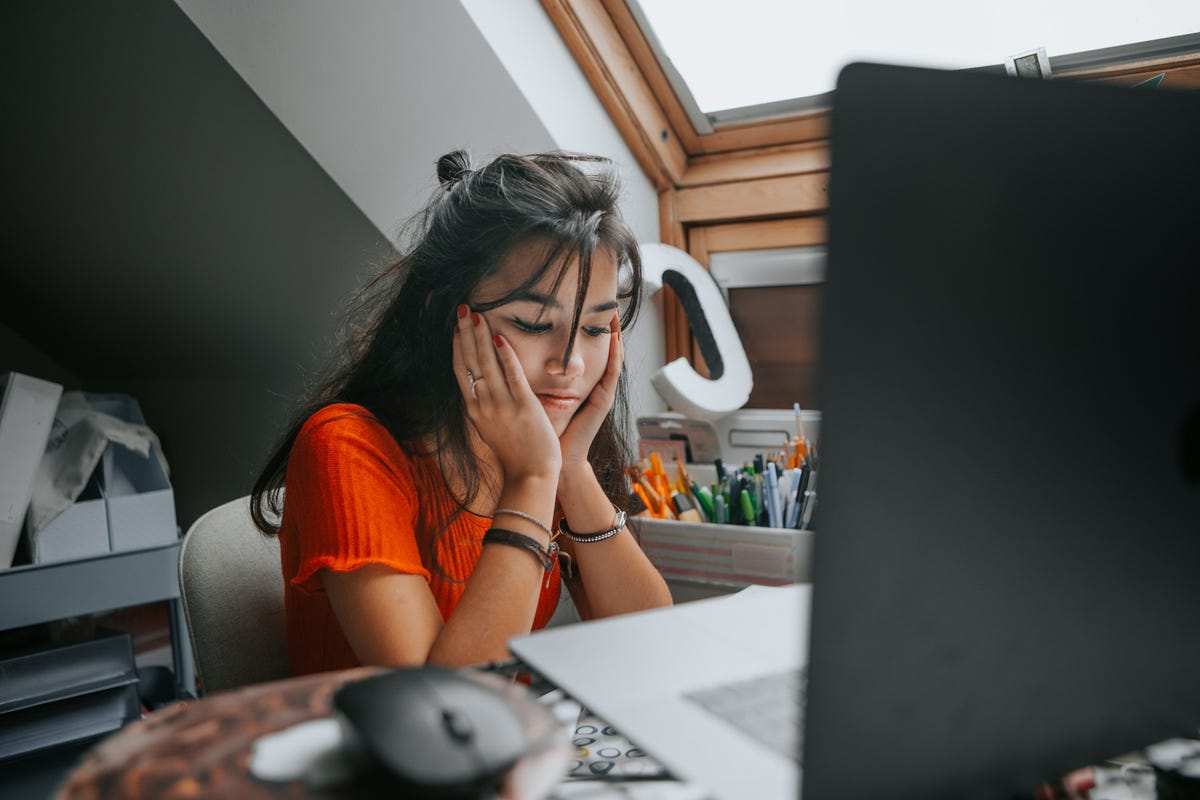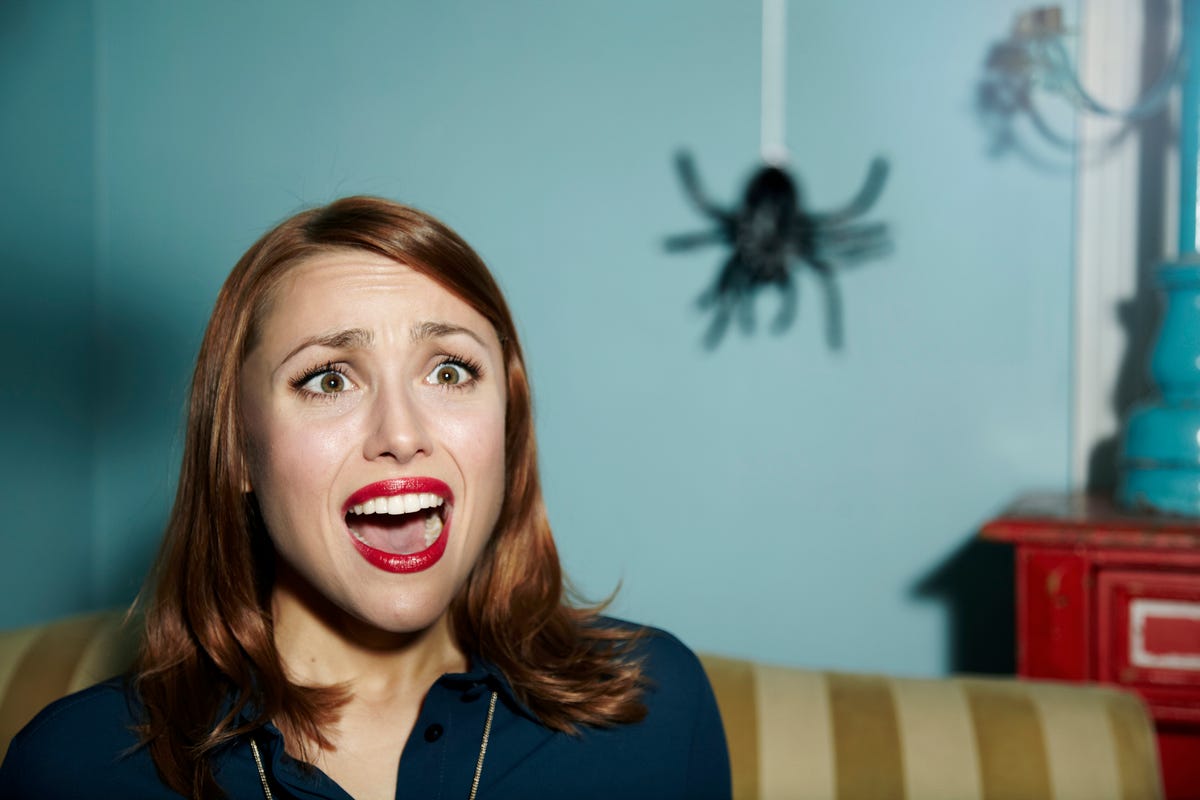It’s Mental Illness Awareness Week, making it a great time to talk about one of the most common mental illnesses in the US: Anxiety. An estimated 40 million adults report having anxiety every year.
Anxiety is a normal human emotion. But for some people, anxiety can be a serious problem that interferes with their ability to function. Understanding what anxiety is and how it affects us is important in coming up with an effective way to cope when it starts taking over your life. Here’s everything you need to know about anxiety disorders and how to cope.
What is anxiety?
Anxiety is defined as fear or worry about the future, and its symptoms can range from mild to severe. Experiencing some level of anxiety is a normal part of life. However, when anxiety becomes so heightened that it keeps us from normal daily activities or interrupts our ability to enjoy our lives, it can become an anxiety disorder. Even if your anxiety isn’t at the level of being diagnosed, there are many ways to alter your daily habits to decrease stress in your life.
What are the causes and risk factors for anxiety disorders?
It’s not easy to pinpoint what causes anxiety since it can arise from a combination of sources. Here are some of the risk factors that may make anxiety and associated disorders more likely:
- Environmental factors: If you live in a chaotic or highly demanding environment, stressors can enhance anxiety.
- Medical factors: Studies have linked certain medical conditions with anxiety due to increased hormones — like cortisol.
- Daily stressor: If you are constantly in a stressful environment, anxiety can be a natural response.
- Genetics: It is possible that genetic factors can pass along a propensity to anxiety.
- Drug or alcohol use: Certain drugs and excessive alcohol use can prompt more anxiety than is typical in those who do not use those substances.
- Personalities: Some level of forward-thinking, fearfulness, and mental tension can be part of one’s personality and the way you approach the world, which is formed by a complex variety of factors.
What are the signs of an anxiety disorder?
Common symptoms of anxiety as listed in the Diagnostic and Statistical Manual Edition 5 include:
- Feeling restless, “keyed up,” or otherwise “on edge”
- Constant feeling of fatigue
- Irritability
- Difficulty concentrating or your mind going blank
- Trouble falling or staying asleep
- Muscle tension
Generally, a diagnosis is more likely if three or more of these are present for more than half the days for six months or more. You can still experience anxiety for less time, with fewer symptoms, or less frequently, but the persistence and variety of symptoms is what indicates a diagnosis.

What are the different types of anxiety disorders?
Anxiety experiences are categorized by the way they manifest, including symptoms in the moment and the triggers that produce the anxiety. While generalized anxiety disorder is one of the most commonly diagnosed disorders, it is possible to experience a combination of various types of anxiety.
Generalized anxiety disorder
The DSM-5 characterizes generalized anxiety disorder as “Excessive anxiety and worry (apprehensive expectation), occurring more days than not for at least six months, about a number of events or activities (such as work or school performance).” It is the most broad diagnosis, and usually is indicated when a person is not worried about a single event more than others. Instead, those who experience GAD have dread, worry or tension associated with many aspects of life.
Panic disorder
While GAD may involve lower-intensity symptoms frequently, panic disorder is associated with sudden-onset, high-intensity symptoms which together mark a “panic attack” or anxiety attack. They can include intense fear, increased heart rate, chest pain, nausea, dizziness, a feeling of being crazy or of not being real. Having an isolated panic attack isn’t usually considered a panic disorder.
Separation anxiety disorder
While some separation anxiety is expected at certain ages and stages of life, a separation anxiety disorder may be present if a person feels excessive fear at being outside their home or away from their close relationships, such as parents or other family members. People with separation anxiety often worry that something bad may happen when separated from those they are attached to.
Social anxiety disorder
Social anxiety disorder involves excessive or limiting amounts of stress and fear in social situations. People with social anxiety often worry excessively about being watche or judged by others. For some, social anxiety can interfere with daily tasks, going to work or school and socializing with others.
Phobia disorders
Phobias are intense fears that go beyond a general distaste or worry about something. Phobias become disorders when they involve triggers that cannot be avoided while participating in everyday life. The trigger must arouse such intense fear that the person either cannot function normally in its presence or must avoid it at all costs, even if it creates great hardship and inconvenience. Common types of phobias include:
- Animals — like spiders, frogs, snakes and dogs
- Heights
- Flying
- Blood
- Getting injections

Agoraphobia
Agoraphobia is just one of a variety of phobias or fears that have escalated to the point where it affects your life in a negative way. While some phobia-level fears can simply be avoided in most circumstances, such as a person with a severe fear of snakes, agoraphobia is associated with tight or crowded spaces, being in public or being outside your home on your own. Because regular life requires that we frequently encounter these circumstances, agoraphobia can interrupt life and make it hard to get the work, socialization, and errands done that are necessary.
How are anxiety disorders treated?
Treatment for anxiety tends to vary based on severity as well as what’s helped a person in the past. Your mental health professional may recommend psychotherapy, medication or a combination of both, and it may take a couple different trials to find what works best for you.
Psychotherapy
There are many types of psychotherapy that can bring relief to individuals with anxiety, but because each therapist takes their own approach to a given form of therapy, the results may vary. For instance, a common therapeutic approach, Cognitive-Behavioral Therapy, has been studied and found to have a 51% “remission rate” for anxiety patients, though this number may not show the full amount of patients who received some benefit from the experience. Therapy can be conducted in-person or using one of a variety of online services that are now available.
The key to exploring psychotherapy for anxiety is to try a different therapist or therapeutic approach if your current one isn’t helping you to alleviate your anxiety.
Medication
The most common class of anxiety medications used to treat anxiety disorders are known as SSRIs, or selective serotonin reuptake inhibitors, which are also used to treat depression and anxiety. Common names of medicines include Prozac, Zoloft, and Lexapro. Other medications, such as beta blockers, tranquilizers, and even certain antihistamines such as Hydroxyzine may be prescribed. Other remedies, like CBD, aren’t medical solutions but have anecdotally helped people manage their anxiety.
Talk to your psychiatrist about the rationale for prescribing a certain anxiety medication, and also stay in contact about any side effects you experience.

How to deal with anxiety
Because many people experience anxiety as part of daily life, a good way to start your path to lower anxiety is to try some lifestyle changes that are considered helpful. Learning how to calm anxiety can be the start of learning how to get rid of anxiety in your own life and circumstances. Diagnosis and treatment are still options, but many people experience better results when they combine lifestyle changes with any of the above treatments.
- Use relaxation techniques: Deep breathing techniques, meditation and mindfulness exercises are all designed to help people focus on the present moment and let go of forward-thinking worry, fear or strain. Incorporating relaxation one or more times a day can help you calm anxiety. If you need guidance, there are a variety of mental health apps that can help you establish a daily practice.
- Try and manage stress: In many cases, stressful circumstances prompt anxiety, including chaotic home situations, unreasonable workplace expectations and relationship strain. While some stressful circumstances cannot change quickly, a valuable goal is to put a plan in place for reducing the stressors themselves, where possible.
- Cut your caffeine intake: Many people observe that reducing their caffeine intake by replacing some caffeinated beverages with uncaffeinated ones prompts less anxious thinking. If you choose this path, don’t immediately cut your caffeine dramatically, but rather slowly reduce your caffeine intake each day so that your body has time to adjust.
- Make sure you have support: Asking family and friends for help, such as for regular social time or for help caring for children or relatives, can strengthen your bond and help you feel less alone in busy or overwhelming circumstances.
- Eat right and exercise regularly: Increasing foods like vegetables, fruit, lean proteins and whole grains has been shown to offer a range of health benefits, including reduction of stress and anxiety. Exercising vigorously multiple times a week is also associated with helping bodies process anxiety, leaving the person with the ability to process stress in a healthy way afterward.
- Make sure you’re getting enough sleep: Interrupted or short sleep doesn’t allow our bodies to recover from the anxiety of previous days. If there are ways to add more sleep or longer lengths of sleep to your lifestyle, trying that could improve your anxiety.
When and how to get help for your anxiety
A basic level of anxiety comes from a healthy place, helping us to plan ahead and avoid dangers. However, when your anxiety doesn’t serve you but instead overwhelms your ability to calm yourself effectively, it’s worth talking to a mental health professional to learn more about how your particular anxiety symptoms compare with the diagnostic categories they have. Talking to someone helps us feel less alone in our journey toward greater mental health, whether it results in a diagnosis or simply helps us get new techniques for coping with our anxiety symptoms.
